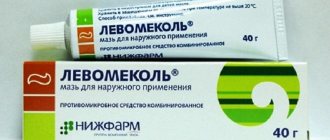Bacitracin
Stylab / Catalog / Antibacterial drugs / Bacitracin
STYLAB offers test systems for the determination of bacitracin in milk, meat, eggs according to MUK 4.1.3535-18 and MUK 4.1.3379-16 , feed and urine, as well as in sturgeon, carp and salmon fillets.
| Enzyme-linked immunosorbent assay (ELISA), strip plate | R2901 RIDASCREEN® Bacitracin |
Bacitracin (the active ingredient of the drugs “Bacilikhin”, “Cikatrin”, “Polybactrin”), also known as the food additive E700, is called a feed antibiotic, since this substance is used as an additive to animal feed in many countries. Bacitracin is a mixture of several structurally similar cyclic polypeptide compounds that are produced by bacteria. In the Russian Federation, bacitracin is used not only in animal husbandry and veterinary medicine, but also in medicine. Some scientists believe that bacitracin, alone or in combination with other substances, may have antiviral activity.
Bacitracin was first discovered in the metabolic products of Bacillus subtilis var. Tracy I (one of the strains of Bacillus subtilis) in 1945. Researchers Balbina Johnson, Herbert Anker and Frank Meneney studied the bacterial flora of contaminated wounds. They noticed that the bacterial composition of cultures obtained from the same tissue samples at the same time could differ depending on whether they were grown in a solid or liquid medium. This difference was especially noticeable when certain microorganisms were present in the broth culture. Many of them inhibited the growth of other bacteria. Particularly active was a strain isolated from tissue from the site of an open fracture of the patient's tibia. It was named Tracy I - after the patient, a girl whose wound was hit by road dust. Researchers determined that the bacteria of this strain secrete a substance (that in reality it is a mixture of substances, they learned later) that has antibiotic properties. It was later discovered that the bacterium Bacillus licheniformis, found in soil and bird feathers, also secretes bacitracin.
Bacitracin is active against pathogens of hemolytic streptococcal diseases, gas gangrene and some other bacteria, as well as protozoa. It does not cause hemolysis, and scientists have considered it as a promising antibiotic. However, further studies have shown that bacitracin is more dangerous than many other antibiotics: it can cause allergies, is nephrotoxic, and, when administered intramuscularly, in some cases causes tissue necrosis. Currently, it is used mainly in agriculture or as powders, ointments or solutions for external use.
Bacitracin is highly soluble in water. It is stable in an acidic environment, but unstable in an alkaline environment, practically does not accumulate in body tissues, is poorly absorbed in the gastrointestinal tract, and when administered orally, it acts mainly in it. This means that bacitracin can inhibit intestinal microflora or contribute to changes in its composition. Bacteria and fungal pathogens often develop resistance to bacitracin, and this happens very quickly. This is how strains of pathogens appear that are resistant to this antibiotic.
Some modern studies have shown that bacitracin triggers the destruction of DNA and RNA molecules. However, these results were obtained under artificial conditions. In other words, these data necessitate further research on bacitracin and suggest that it is capable of damaging molecules that carry genetic information, but do not prove the presence of such properties in this antibiotic.
Bacitracin is used as an antimicrobial prophylactic and growth-stimulating agent for raising and fattening animals and poultry. Sometimes it is used to prevent necrotic enteritis and respiratory diseases in animals, including pathogens such as Clostridium perfringens (one of the causative agents of necrotic enteritis, as well as gas gangrene). In addition, under the influence of this antibiotic, animals and poultry eat more and gain weight faster. The use of bacitracin in agriculture means that its residues can end up in food products of animal origin and cause harm to the health of the consumer.
In the European Union, bacitracin was removed from the list of approved feed additives in 1999 (directive 70/524/EEC Annex B). In addition, maximum permissible levels of its residues in food products have been established (Regulation 37/2010/EU).
“Unified sanitary-epidemiological and hygienic requirements for goods subject to sanitary-epidemiological supervision (control)” provide for the control of antimicrobial agents, including bacitracin, in products of animal origin. According to them, the maximum permissible concentration of bacitracin in food products should not exceed 0.02 mg/kg (20 μg/kg). Technical Regulations of the Customs Union TR CU 021/2011 “On the safety of food products” establishes the same level. At the same time, not only meat and offal, but also fish, eggs and honey are subject to control for bacitracin. Current legal regulations can be found on compact24.com .
As mentioned above, bacitracin is a mixture of polypeptide compounds. This means that when analyzing bacitracin, it is necessary not only to determine its concentration in the sample, but also to distinguish these substances from other polypeptides. Since mixtures containing many substances of different structure, origin and purpose are used as feed additives, the analysis of bacitracin in feed and food products is a complex task.
To determine bacitracin, the method of thin layer chromatography is used. Microbiological methods based on the sensitivity of bacteria to this antibiotic are also common in food products. But microorganisms quickly develop resistance to bacitracin, so the results obtained by this method need to be verified.
The RIDASCREEN® Bacitracin test system is based on the enzyme immunoassay method. It is designed in a microtiter plate format and allows you to quickly and efficiently determine the bacitracin content in food samples, including those intended for baby food and animal feed. The system complies with MUK 4.1.3379-16 (“Guidelines for the determination of residual amounts of bacitracin in products of animal origin by enzyme immunoassay”).
Literature
- Johnson B., Anker H. and Meleney F. (1945). "Bacitracin: a new antibiotic produced by a member of the B. subtilis group." Science 102(2650):376–377.
- Moussa S. Diarra and François Malouin. Antibiotics in Canadian poultry productions and anticipated alternatives. Frontiers in Microbiology v.5 art. 282; June 2014.
- Committee for Veterinary Medicinal Products Bacitracin." Ema.europa.eu. The European Agency for the Evaluation of Medicinal Products, June 1998. Web. 18 Jan. 2013
- European Pharmacopoeia 5.0. Bacitracin, 01/2005
- Ciesiołka J, Jeżowska-Bojczuk M, Wrzesiński J, Stokowa-Sołtys K, Nagaj J, Kasprowicz A, Błaszczyk L, Szczepanik W. Antibiotic bacitracin induces hydrolytic degradation of nucleic acids. Biochim Biophys Acta. 2014 Jun;1840(6):1782-9.
- HH Lara, L. Ixtepan-Turrent, EN Garza-Treviño, SM Flores-Teviño, G. Borkow, C. Rodriguez-Padilla, Antiviral properties of 5,5′-dithiobis-2-nitrobenzoic acid and bacitracin against T-tropic human immunodeficiency virus type 1, Virol. J. 8 (2011) 137.
- Wei S, Gutek A, Lilburn M, Yu Z. Abundance of pathogens in the gut and litter of broiler chickens as affected by bacitracin and litter management. Vet Microbiol. 2013 Oct 25;166(3-4):595-601.
←Return



